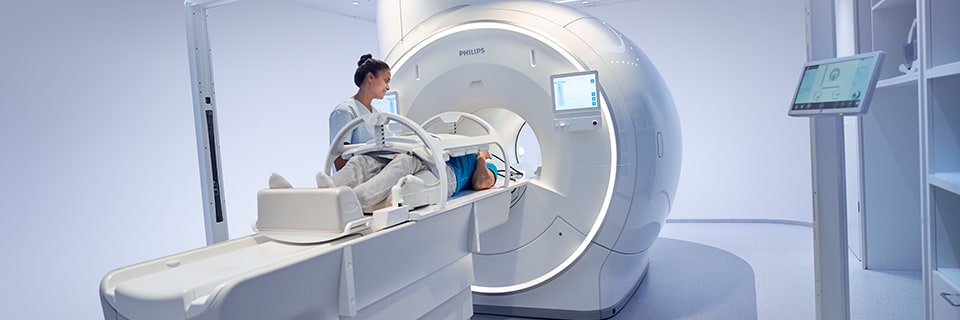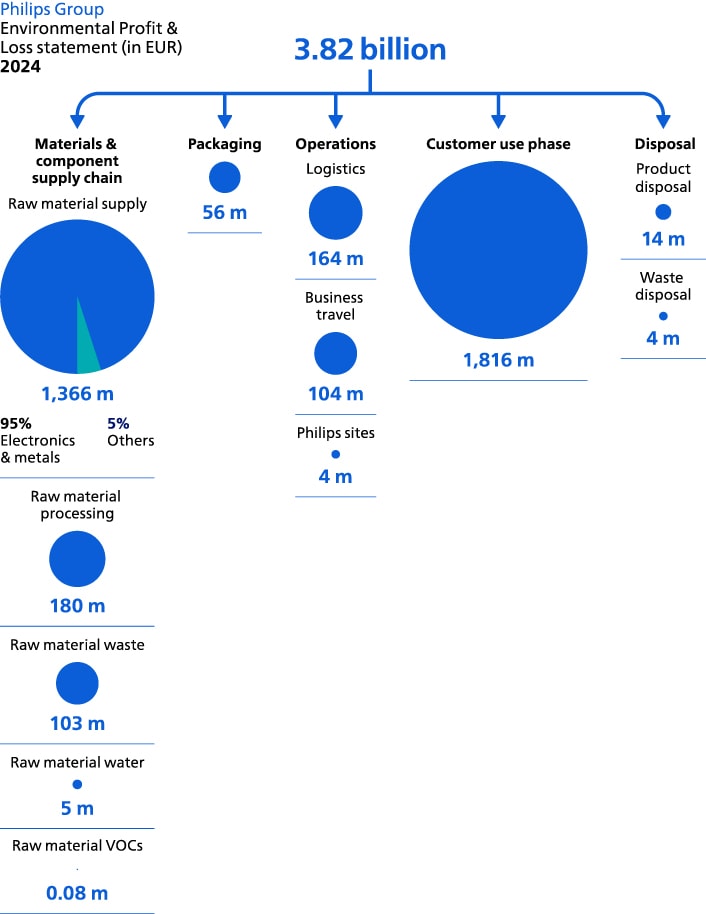Sustainable innovation through EcoDesign
With EcoDesign, we embed sustainability in our innovation processes. The difference between EcoDesign and conventional design is the clear goal – right from the start of the innovation and design process – to reduce the total environmental impact.

We aim to design all our new products and services in line with our EcoDesign requirements by 2025. This means improving the energy efficiency of our products, using less resources and more recycled content, avoiding the use of hazardous substances, designing for circularity, and making our packaging easier to recycle and re-use.
Sustainable innovation through EcoDesign
With EcoDesign, we embed sustainability in our innovation processes. The difference between EcoDesign and conventional design is the clear goal – right from the start of the innovation and design process – to reduce the total environmental impact.

Quantifying environmental impact

Analyzing impact across the life cycle
We apply Life Cycle Analysis thinking as the backbone for our EcoDesign process. This enables us to determine the environmental impact at each stage of a product's life – from raw material extraction through materials processing, manufacture, distribution, use, repair and maintenance, and disposal or recycling.
Driving improvement
By consistently applying Life Cycle Analysis, we are able to identify and realize significant improvements, lowering environmental impact. The environmental hotspots are captured in four Focal Areas – Energy, Packaging, Substances, and Circularity (including Weight & Materials).
By consistently applying Life Cycle Analysis, we are able to identify and realize significant improvements, lowering environmental impact. The environmental hotspots are captured in four Focal Areas – Energy, Packaging, Substances, and Circularity (including Weight & Materials).




Energy Energy consumption is often the single most important factor in determining a product’s lifecycle environmental impact. By improving the energy efficiency of a product, we can reduce its energy consumption and carbon footprint. Products are made using a range of substances, some of which may have an impact on people’s health or the environment. By minimizing or eliminating the use of hazardous substances, we can reduce our products’ health and/or environmental impact. Packaging Material, weight and volume reduction, along with smart material choices (e.g. from recycled and/or certified renewable sources, 100% recyclable, easily separable), helps minimize resource consumption and environmental impact over the life cycle of the packaging. At the same time, designing packaging to be reusable, recyclable or compostable also ensures it is circular economy-ready. Circularity refers to the potential of a system, product or component to contribute to the circular economy. It is calculated by assessing environmental performance over multiple life cycles, taking into account, for example, the recovery of materials and their reuse in new products. Upgrading, serviceability, refurbishment, spare parts harvesting, increased recycled content and recyclability, weight reduction, selection of more sustainable materials – these all help to reduce resource consumption. Circularity also includes product lifetime; longer lifetime reduces the resource consumption and transportation emissions associated with the introduction of new products. Substances
Circularity
Recognizing EcoDesigned products
Philips EcoDesigned products offer a significant environmental improvement in one or more of the four Focal Areas – either by meeting product-specific eco-performance requirements and/or being rewarded with a recognized eco-performance label. The EcoDesign product mark is used on all EcoPassports and Environmental Product Declarations. Our EcoDesign process is subject to external third-party auditor assurance from EY (previous years KPMG).
Supporting recycling
We want to improve people’s health and well-being through meaningful innovation, and we aim to achieve that while minimizing our impact on the planet and its finite resources. This means that we have to continuously work on the environmental performance of our products, which includes designing for recyclability and reuse, e-waste management, and other factors.
Chemicals management
Minimizing – and wherever possible eliminating – the use of hazardous substances in our products and production processes is a cornerstone of our commitment to health, safety and the environment.
ESG news and insights
You may also find the following articles interesting
You may also find the following articles interesting

